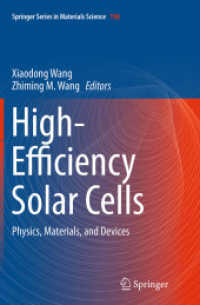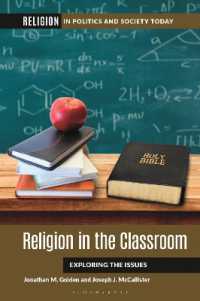Full Description
For those within the fields of art history and Byzantine studies, Professor Henry Maguire needs no introduction. His publications transformed the way art historians approach medieval art through his insightful integration of rhetoric, poetry and non-canonical objects into the study of Byzantine art. His ground-breaking studies of Byzantine art that consider the natural world, magic and imperial imagery, among other themes, have redefined the ways medieval art is interpreted. From notable monuments to small-scale and privately used objects, Maguire's work has guided a generation of scholars to new conclusions about the place of art and its function in Byzantium. In this volume, 23 of Henry Maguire's colleagues and friends have contributed papers in his honour, resulting in studies that reflect the broad range of his scholarly interests.
Contents
1. Picturing Thessaloniki;
2. An icon of John the Baptist;
3. Internationalizing Russia's Byzantine heritage: Medieval enamels and chromolithographic geopolitics;
4. Gender and gesture;
5. The portrait of a lady;
6. The perils of Polyeuktos: On the manifestations of a martyr in Byzantine art, cult and literature;
7. Hanging by a thread: The death of Judas in early Christian art;
8. Claiming the Cross: Reconsidering the Stavelot triptych;
9. The making of an icon: 'Christ of the Miracle of the Latomou';
10. Firm flowers in the artifice of transience;
11. Art and efficacy in an icon of St. George;
12. Contexts for the Christos Paschon;
13. The calendar of saints in Hodegon lectionaries;
14. Multiple phase churches in Cappadocia;
15. Visions of the Passion imagined through the agency of voice and icon;
16. The season of salvation: Images and texts at Li Monaci in Apulia;
17. King David narratives, messianic politics and the Dura-Europos synagogue;
18. From a conqueror to a legitimate heir: The Byzantine princely family, Gentile Bellini and Mehmed II Fatih;
19. The giraffe that came to Constantinople;
20. The many-eyed archangels in early Byzantine art;
21. Absence of Nomina Sacra in post-iconoclastic images of Christ and the Virgin: Mosaics of Hagia Sophia, Constantinople;
22. Integrated yet segregated: Eastern Islamic art in twelfth-century Byzantium;
23. The Mother of God in the earthly paradise








